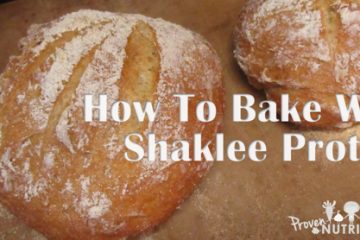Soy Isolate Done Right Part 3: Soy Protein Processing Steps
In the first post of this soy series, I discussed why the processing of the soy isolate matters. Then I dove into how the soybean is grown. Now I transition to sharing what happens to get the soybean into your protein shake. What are the necessary steps? Why do these steps matter to your health?
Soy Protein Powder Processing Steps
The processing of the soy bean starts at the point of seed all the way to the finished soy protein powder (or isolate). Each step along the way has certain markers of quality. You will quickly be able to see that the differences matter.
Isolating The Soy Protein
This first step involves separating the protein from the oil. During this step, the beans are dried and rolled into flakes. The flakes are then washed in order to separate out the oil. [6. Soyfoods.org. “Soy Protein Isolate.” http://www.soyfoods.org/soy-products/soy-fact-sheets/soy-protein-isolate-fact-sheet] Way back in the 1930s it was discovered that hexane, a petroleum-based solvent, could separate out the soy oil and still leave behind a protein-rich meal. This process is called alcohol-washing.
Alcohol washing is generally recognized as safe since no hexane ends up in your food. [7. Soyfoods.org. “Facts About Hexane and Soy Foods.” http://www.soyfoods.org/wp-content/uploads/2010/Facts%20About%20Hexane%20and%20Soyfoods%20Ready%20for%20Board.pdf] However, the alcohol-washing has been proven to destroy the healthful isoflavone content of the soy–up to 88%! Soy isoflavones have been shown to reduce cancer risk[8. Shu XO et al.Adolescent soy food intake and other dietary habits and breast cancer risk. Proceedings of the American Association for Cancer Research 2000; 4l:(abs 602) 94.], help balance hormones, and increase bone mass. [9. Highlights of the Third International Symposium on the Role of Soy in Preventing and Treating Chronic Disease – 1999. The Soy Connection, Vol. 8, #2, Spring 2000.] Without these present, the soy protein powder lacks many of its proven health benefits.
A more delicate way of isolating the protein was used shortly thereafter by Dr. Forrest C. Shaklee [1894-1985]. He utilized a room-temperature water extraction method that did not necessitate using hexane. He thereby preserved the isoflavone content during processing.
You as the consumer need to be aware that both methods of extraction are still in use today.
Cooking Process
Part of the processing of the soy protein involves heat to cook the soy. The use of heat can be tricky, though, as it can also damage the amino acids present in the soy. Amino acids are the building blocks of protein. Proteins are essential for just about all the growth and maintenance in the body. Of all the amino acids, nine of them are essential. This means that our body cannot make them and must get them from our diet.
Soy protein contains all nine essential amino acids, but they are very sensitive to heat. In order to receive the benefits of these amino acids, the soy protein must be cooked at a low heat. The only way a company can guarantee these are still present and active is to do the quality testing of their end product.
Toxic Substances Removed

Photo Credit: herefordcat via Compfight cc
As I mentioned earlier in this series, the raw soybean has some toxic compounds that are present to help the plant protect itself. If we were a bunch of sheep eating soy crops, we would eventually find ourselves unable to reproduce efficiently. These unwanted toxins must be either deactivated or removed through careful processing. Again, quality testing of the final product becomes key.
Calcium Added
The raw soybean is a neutral food, neither acidic nor alkaline. However, during the isolation process above, the powder left behind from the oil becomes very acidic. The acidic powder can also have some negative side effects to our health. So, calcium can be added to the final product to bring the food back to neutral.
Where Does This Leave Us?
Whew. Making a truly beneficial soy isolate protein is no walk in the park! The processing of the soybean has become a true science.
So how do you find a healthy soy supplement? How do you find a company that pays attention to these key pieces of the processing?
I’m so glad you asked! My next post will compare what different soy companies are doing so that you can find one with the most health benefits. Stay tuned!


0 Comments